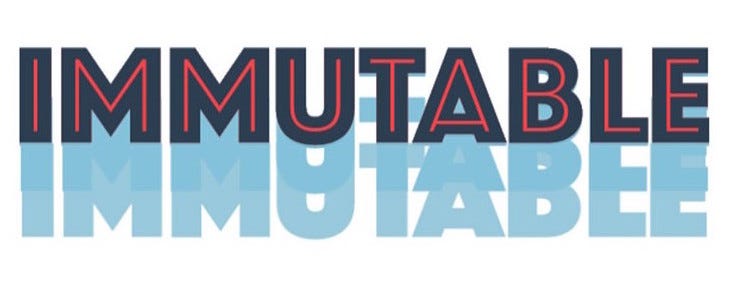Javimmutable Collections

- Why Immutability?
- thread safety since race conditions are impossible with immutable data structures
- safe to pass as parameter values or return from methods
- return value especially nasty with Collections.unmodifiableMap and friends
- eliminate need for bad stuff like locking and defensive copying
- Good Advice
- Kinds of immutable data structures
- Pseudo-immutability - Collections.unmodifableList, etc
- Guava ImmutableList, ImmutableMap, etc
- defensive copying during creation then unchangeable without another full copy
- no insert, delete, put etc methods provided since they would be slow
- Functional/Persistent immutability
- any given copy of structure never changes but mutated variations can be created easily
- efficient creation of modified versions of data structure
- insert, delete, put etc methods are provided that return new version of structure reflecting the change
- Isn’t that slow?
- NO!!
- structure sharing makes it efficient
- re-use almost entire data structure in every modified variation
- creating variation requires creating ~ log2(n) or log32(n) new nodes
- log2(1 million) = 20
- log32(1 million) = 4
- so changing a value in a 1 million node 32-way trie only creates 4 new nodes and re-uses all others
- These images illustrate structure sharing concept (though none of them exactly match how javimmutable does things)
- What about hash maps?
- mutable hash maps use an integer hash code and a big array indexed by the hash code
- copying the array on every modification would be too slow
- but hash code can be stored more efficiently in a trie
- This image of a string trie illustrates how a trie can be built up from pieces of a string
- Break integer hash into parts of 4 bits each
- 0x1234 breaks into parts 1, 2, 3, and 4
- build tree of arrays
- each level in tree use appropriate part (first at root, second at depth 1, etc)
- Images illustrating hash array mapped trie concepts
- Javimmutable uses 32 element arrays (5 bits per part) at each level of tree
- Don’t you wind up with a ton of mostly empty arrays?
- no! - create bit mask with each bit representing an array index
- 32 bit int mask maps to 32 indexes in array, tree always max depth 7 (root has only 2 bit mask)
- create array with size == number of 1 bits in mask
- first 1 bit in mask is index of first element in array, etc
- modern CPUs have native instruction to determine first 1 bit in an int
- java provides native method to expose that instruction
- performance numbers
